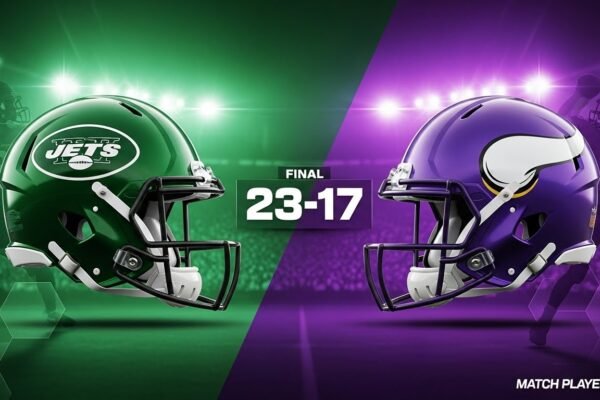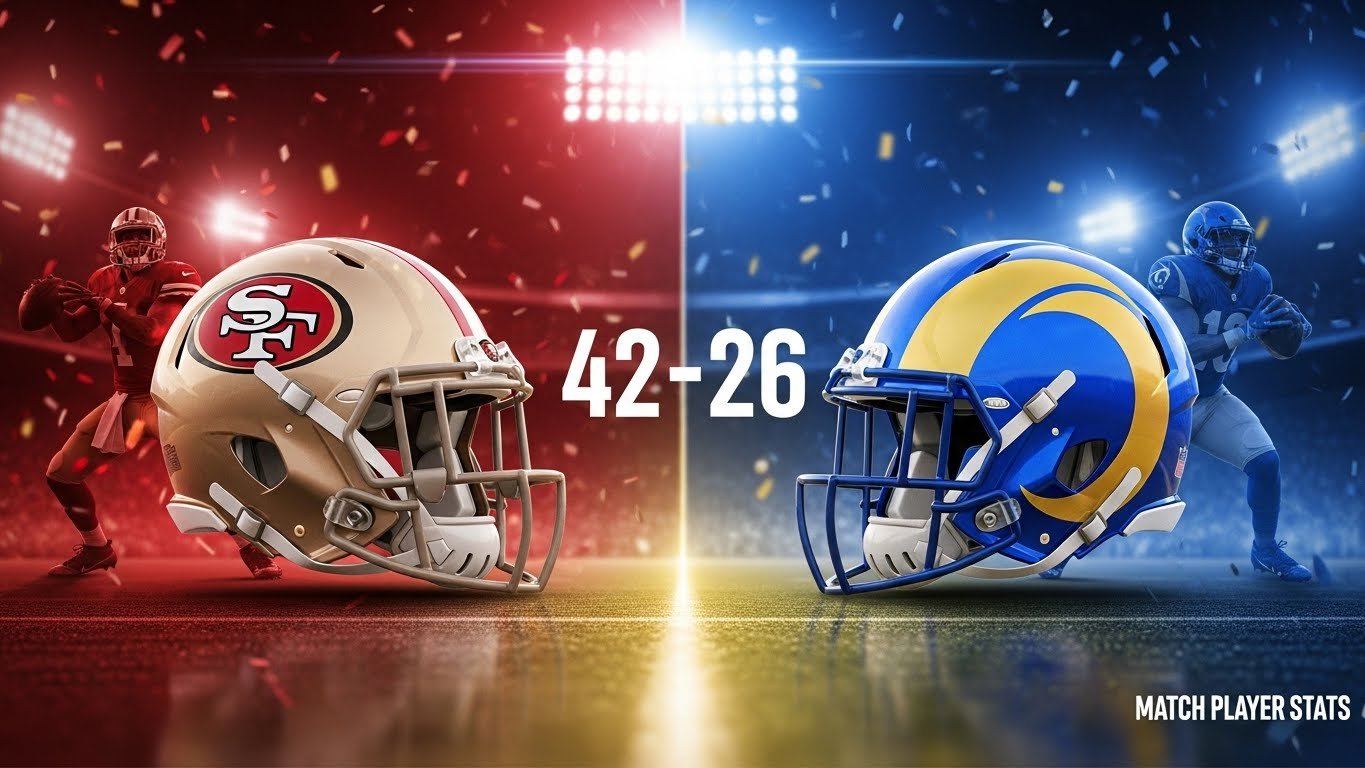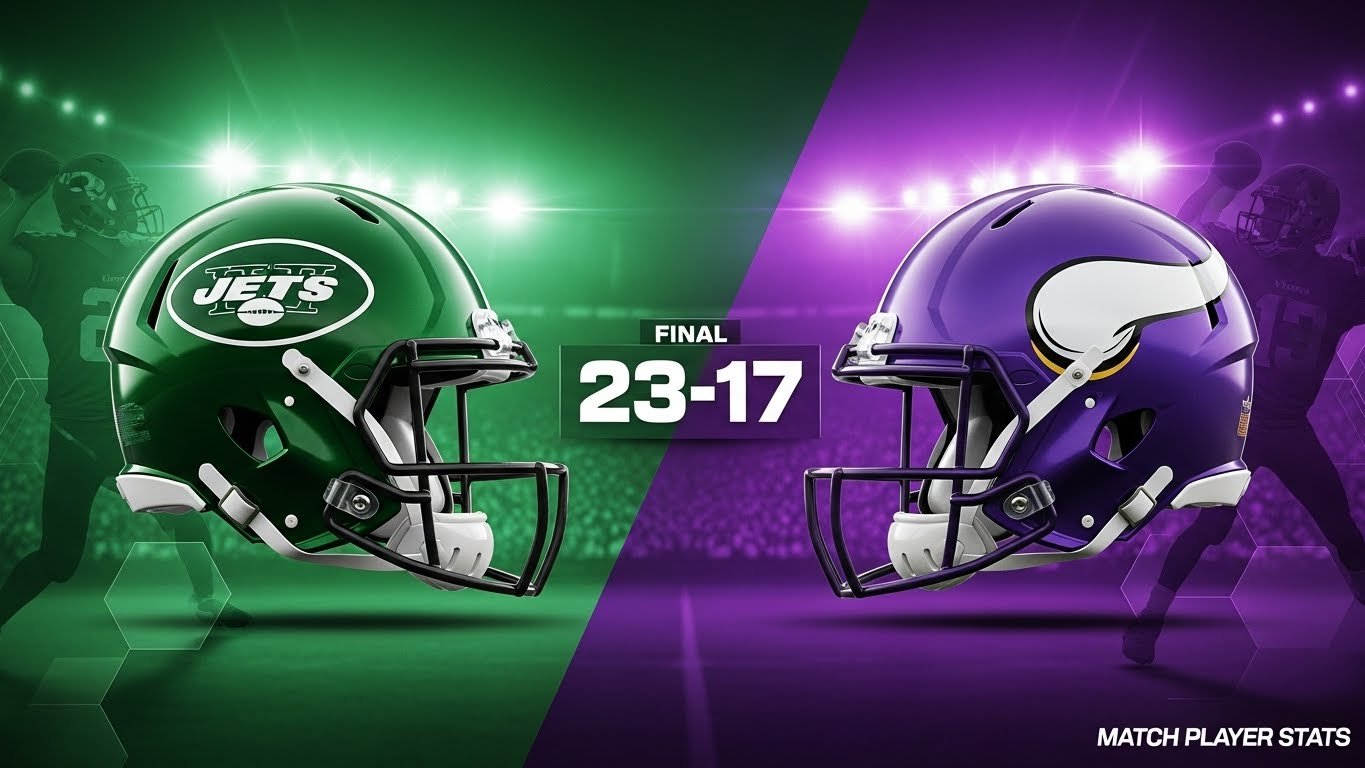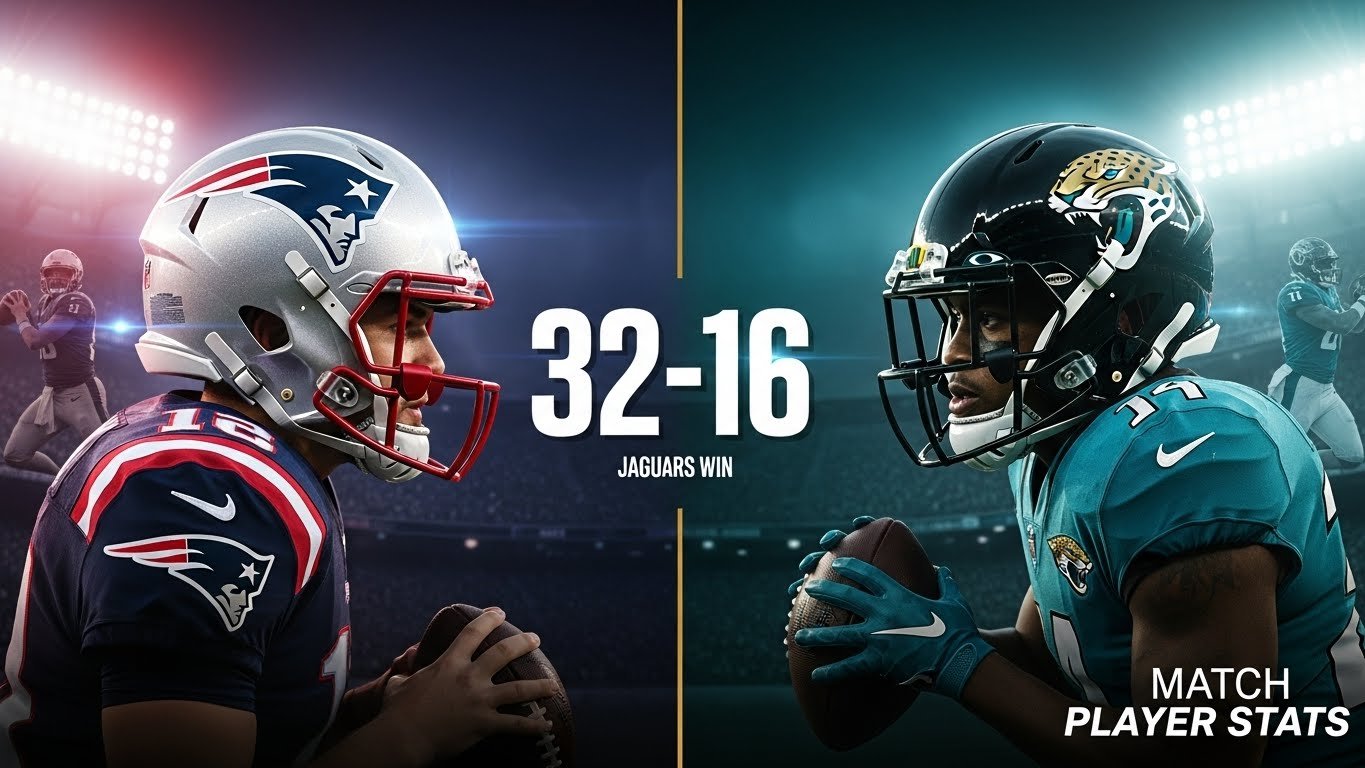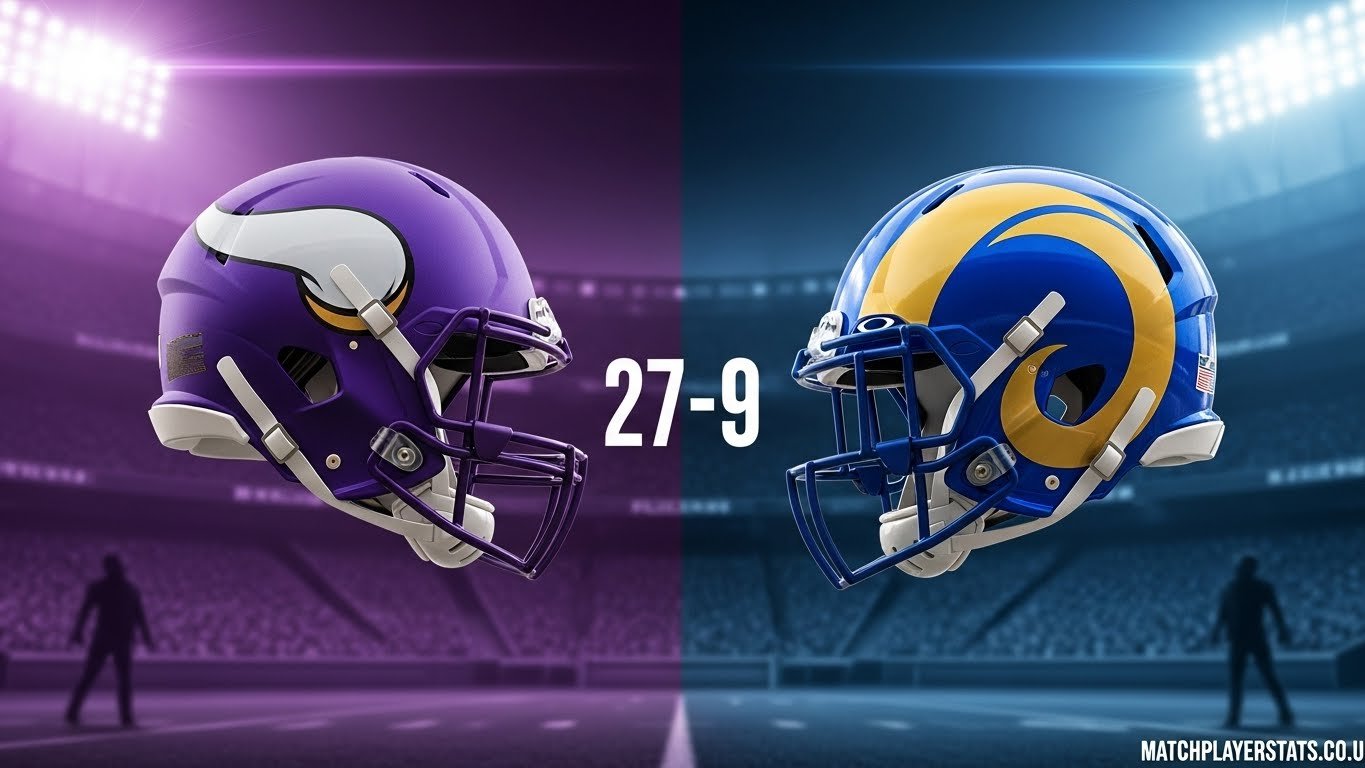

Las Vegas Raiders vs Cincinnati Bengals Match Player Stats (Nov 3, 2024)
Three offensive coaches lost their jobs after this game. That’s how bad things got for Las Vegas in their 41-24 loss to Cincinnati on November 3, 2024. The statistics from this Week 9 NFL matchup at Paycor Stadium explain why Raiders owner Mark Davis made immediate changes to his coaching staff.
Game Overview and Quick Reference
Cincinnati 41, Las Vegas 24
Date: November 3, 2024
Location: Paycor Stadium, Cincinnati, Ohio
Attendance: 65,962
Broadcast: FOX
Referee Crew: Kent Payne (referee), Greg Yette, Bryan Neale, Kevin Codey, Bradley Rogers, Anthony Jeffries, Joe Blubaugh
Table of Contents
Quarter-by-Quarter Scoring
| Quarter | Las Vegas | Cincinnati |
|---|---|---|
| 1st | 7 | 7 |
| 2nd | 3 | 10 |
| 3rd | 0 | 14 |
| 4th | 14 | 10 |
| Final | 24 | 41 |
Cincinnati scored on their first five possessions. Las Vegas managed just 217 total yards. Those two facts alone explain why Offensive Coordinator Luke Getsy, Offensive Line Coach James Cregg, and Quarterbacks Coach Rich Scangarello were unemployed by Sunday night.
Quarterback Performances Define the Game
Joe Burrow threw five touchdown passes, tying his career high. Gardner Minshew got benched. Desmond Ridder came in and got sacked four times. The quarterback statistics from this Raiders vs Bengals game show exactly how Cincinnati controlled the outcome.
Passing Statistics
| Quarterback | Team | Comp/Att | Yards | TDs | INTs | Rating | Sacks-Yards Lost |
|---|---|---|---|---|---|---|---|
| Joe Burrow | CIN | 27/39 | 251 | 5 | 1 | 115.5 | 1-8 |
| Gardner Minshew | LV | 10/17 | 124 | 0 | 0 | 81.5 | 1-7 |
| Desmond Ridder | LV | 11/16 | 74 | 1 | 0 | 99.5 | 4-34 |
Burrow found five different receivers for touchdowns: Chase Brown caught a 1-yarder, Drew Sample grabbed a 2-yard score, Mike Gesicki hauled in touchdown passes of 11 and 47 yards, and Andrei Iosivas connected on a 10-yard strike. This distribution kept Las Vegas defensive coordinator Patrick Graham guessing all afternoon.
Minshew’s day ended after he fumbled in the third quarter with Cincinnati leading 24-10. Head coach Antonio Pierce turned to Ridder. The results were worse. Ridder absorbed four sacks for 34 yards lost, including a strip-sack by Trey Hendrickson that essentially ended any comeback hopes.
Between them, Las Vegas quarterbacks completed 21 of 33 passes for just 198 yards. They were sacked five times for 41 yards lost. Neither could sustain drives against Cincinnati’s defense, which brought consistent pressure without needing to blitz extensively.
Receiving Statistics Show Cincinnati’s Balance
Ja’Marr Chase caught seven passes but gained only 43 yards because Las Vegas committed extra defenders to stopping him. This defensive strategy backfired spectacularly. Mike Gesicki torched the Raiders’ linebackers for 100 yards and two touchdowns, while other Cincinnati receivers found space all over the field.
Top Pass Catchers
| Receiver | Team | Receptions | Targets | Yards | Average | TDs | Longest |
|---|---|---|---|---|---|---|---|
| Jakobi Meyers | LV | 8 | 11 | 105 | 13.1 | 0 | 23 |
| Mike Gesicki | CIN | 5 | 6 | 100 | 20.0 | 2 | 47 |
| Ja’Marr Chase | CIN | 7 | 11 | 43 | 6.1 | 0 | 11 |
| Brock Bowers | LV | 5 | 8 | 45 | 9.0 | 1 | 22 |
| Chase Brown | CIN | 5 | 5 | 37 | 7.4 | 1 | 13 |
| Erick All Jr. | CIN | 2 | 2 | 24 | 12.0 | 0 | 18 |
| Harrison Bryant | LV | 2 | 2 | 22 | 11.0 | 0 | 18 |
| Drew Sample | CIN | 4 | 4 | 14 | 3.5 | 1 | 5 |
| Tanner Hudson | CIN | 2 | 3 | 14 | 7.0 | 0 | 11 |
| Ameer Abdullah | LV | 3 | 3 | 14 | 4.7 | 0 | 10 |
| Andrei Iosivas | CIN | 1 | 4 | 10 | 10.0 | 1 | 10 |
| Tre Tucker | LV | 2 | 6 | 5 | 2.5 | 0 | 6 |
| Ramel Keyton | LV | 1 | 2 | 7 | 7.0 | 0 | 7 |
| Kendric Pryor | CIN | 1 | 1 | 9 | 9.0 | 0 | 9 |
Jakobi Meyers fought hard for Las Vegas, catching 8 passes on 11 targets for 105 yards. His production represented 48% of the Raiders’ total net yards. Without him, Las Vegas’s passing game would have been completely nonexistent. Rookie tight end Brock Bowers added a 22-yard touchdown reception from Ridder with 41 seconds remaining, long after the outcome was decided.
Gesicki’s 47-yard touchdown catch in the fourth quarter came on a simple seam route where linebacker Robert Spillane couldn’t keep up. His two-touchdown performance marked his first multi-score game since 2020 with Miami. Eight different Bengals caught passes from Burrow, preventing Las Vegas from focusing their coverage on any single target.
Running Game Statistics
Second-year back Chase Brown stepped up for injured Zack Moss with the best game of his young career. His consistent gains kept Cincinnati ahead of the chains and opened play-action opportunities for Burrow. Las Vegas, by contrast, couldn’t establish anything on the ground.
Rushing Production
| Runner | Team | Attempts | Yards | Average | TDs | Long Run |
|---|---|---|---|---|---|---|
| Chase Brown | CIN | 27 | 120 | 4.4 | 0 | 21 |
| Alexander Mattison | LV | 9 | 36 | 4.0 | 0 | 7 |
| Ameer Abdullah | LV | 4 | 12 | 3.0 | 0 | 6 |
| Joe Burrow | CIN | 3 | 11 | 3.7 | 0 | 10 |
| Zamir White | LV | 6 | 10 | 1.7 | 1 | 4 |
| Desmond Ridder | LV | 1 | 2 | 2.0 | 0 | 2 |
| Gardner Minshew | LV | 1 | 0 | 0.0 | 0 | 0 |
| Jake Browning | CIN | 1 | -1 | -1.0 | 0 | -1 |
Brown’s 120 yards on 27 carries kept Cincinnati’s offense on schedule throughout the game. He consistently gained 4-5 yards on first down, setting up manageable second downs. His longest run of 21 yards came in the third quarter, helping Cincinnati extend their lead.
Las Vegas totaled 60 rushing yards on 21 attempts, a 2.9 average that ranks among the worst performances by any NFL team this season. Zamir White scored their lone rushing touchdown on a 1-yard plunge in the first quarter after the play was initially ruled short and reversed on review. After that early score, the Raiders rushed for just 53 yards the rest of the game.
Defensive Player Statistics
Trey Hendrickson’s four-sack performance pushed him to 11 sacks for the season, leading the NFL at that point. But the defensive statistics show more than just one player’s dominance. They reveal how Cincinnati’s entire unit suffocated Las Vegas’s offense.
Defensive Production Leaders
| Defender | Team | Total Tackles | Solo | Sacks | QB Hits | TFL | Pass Def | FF | FR |
|---|---|---|---|---|---|---|---|---|---|
| Tre’von Moehrig | LV | 13 | 8 | 0.5 | 1 | 0 | 0 | 0 | 0 |
| Logan Wilson | CIN | 9 | 5 | 0 | 0 | 0 | 0 | 0 | 2 |
| Mike Hilton | CIN | 8 | 6 | 0 | 0 | 1 | 0 | 0 | 0 |
| Robert Spillane | LV | 7 | 1 | 0 | 1 | 1 | 0 | 0 | 0 |
| Isaiah Pola-Mao | LV | 7 | 4 | 0 | 0 | 0 | 1 | 0 | 0 |
| Jordan Battle | CIN | 6 | 3 | 0 | 1 | 0 | 1 | 0 | 0 |
| Jakorian Bennett | LV | 6 | 4 | 0 | 0 | 0 | 1 | 0 | 0 |
| Kris Jenkins Jr. | CIN | 5 | 2 | 1 | 1 | 1 | 0 | 0 | 0 |
| Nate Hobbs | LV | 5 | 3 | 0 | 0 | 0 | 0 | 0 | 0 |
| Darnay Holmes | LV | 5 | 2 | 0 | 0 | 0 | 1 | 0 | 0 |
| Trey Hendrickson | CIN | 4 | 4 | 4 | 7 | 4 | 1 | 1 | 0 |
| Jack Jones | LV | 4 | 4 | 0 | 0 | 0 | 2 | 0 | 0 |
| Divine Deablo | LV | 4 | 3 | 0 | 0 | 0 | 0 | 0 | 0 |
| Geno Stone | CIN | 4 | 2 | 0 | 0 | 0 | 0 | 0 | 0 |
| Jonah Laulu | LV | 4 | 1 | 0 | 0 | 0 | 0 | 0 | 0 |
| Maxx Crosby | LV | 3 | 1 | 0 | 3 | 1 | 1 | 0 | 0 |
| DJ Turner II | CIN | 3 | 3 | 0 | 0 | 0 | 0 | 0 | 0 |
Cincinnati pressured Las Vegas quarterbacks on 56.4% of their dropbacks, according to Next Gen Stats data. That pressure rate ranked as the Bengals’ season high. Logan Wilson’s two fumble recoveries turned both Las Vegas turnovers into Cincinnati scores. His positioning and awareness proved crucial in capitalizing on the pressure Hendrickson created.
Maxx Crosby failed to record a sack despite playing 74 snaps. He managed three quarterback hits but also committed an unnecessary roughness penalty in the second quarter that extended a Cincinnati touchdown drive. The penalty gave Cincinnati 14 free yards and came right before they scored to take a 17-10 lead.
Jack Jones intercepted Joe Burrow in the fourth quarter and returned it 29 yards for Las Vegas’s only defensive touchdown. The pick-six cut Cincinnati’s lead to 31-17 with 13:17 remaining. But with the Raiders’ offense unable to sustain any drives, it merely made the final score less embarrassing.
Special Teams Contributions
Field position mattered in this game, and Cincinnati won that battle too. Despite AJ Cole’s strong punting for Las Vegas, the Bengals consistently started drives in better field position thanks to their offense’s ability to flip the field.
Kicking Performance
| Kicker | Team | Field Goals | Percentage | Long | Extra Points | Total Points |
|---|---|---|---|---|---|---|
| Daniel Carlson | LV | 1/1 | 100% | 46 | 3/3 | 6 |
| Evan McPherson | CIN | 2/2 | 100% | 44 | 5/5 | 11 |
McPherson connected from 44 and 27 yards, while Carlson’s lone field goal came from 46 yards out in the second quarter. The difference in extra point attempts (5 to 3) shows how many more touchdowns Cincinnati scored.
Punting Statistics
| Punter | Team | Punts | Total Yards | Average | Inside 20 | Longest |
|---|---|---|---|---|---|---|
| AJ Cole | LV | 5 | 280 | 56.0 | 3 | 70 |
| Ryan Rehkow | CIN | 3 | 175 | 58.3 | 0 | 65 |
Cole punted five times because Las Vegas’s offense kept stalling. His 56-yard average and three punts inside the 20 represent excellent individual performance on a day when his team gave him little support. Rehkow punted just three times because Cincinnati’s offense sustained drives and scored consistently.
Return Game Summary
| Return Type | Player | Team | Returns | Yards | Average | Long |
|---|---|---|---|---|---|---|
| Punt Returns | DJ Turner | LV | 2 | 30 | 15.0 | 24 |
| Punt Returns | Trenton Irwin | CIN | 3 | 26 | 8.7 | 13 |
| Kick Returns | Kendric Pryor | CIN | 2 | 43 | 21.5 | 24 |
Neither team broke a significant return, but field position accumulated through multiple short gains favored Cincinnati throughout the contest.
Complete Team Statistical Comparison
These comprehensive team statistics demonstrate Cincinnati’s control of every phase. From time of possession to third-down conversions to red zone efficiency, the Bengals dominated the statistical battle.
Full Team Statistics
| Category | Las Vegas | Cincinnati |
|---|---|---|
| Total Plays | 59 | 71 |
| Total Net Yards | 217 | 373 |
| Passing Yards | 157 | 243 |
| Rushing Yards | 60 | 130 |
| Yards Per Play | 3.7 | 5.3 |
| First Downs | 16 | 26 |
| First Downs – Pass | 10 | 18 |
| First Downs – Rush | 4 | 5 |
| First Downs – Penalty | 2 | 3 |
| Third Down Conversions | 5/13 (38.5%) | 8/15 (53.3%) |
| Fourth Down Conversions | 0/1 (0%) | 1/1 (100%) |
| Total Drives | 11 | 13 |
| Time of Possession | 24:46 | 35:14 |
| Turnovers | 2 | 1 |
| Fumbles Lost | 2 | 0 |
| Interceptions | 0 | 1 |
| Sacks Allowed-Yards | 5-41 | 1-8 |
| Total Penalties | 6-51 | 7-60 |
| Red Zone Visits | 1 | 5 |
| Red Zone Touchdowns | 1/1 (100%) | 4/5 (80%) |
| Defensive/ST Touchdowns | 1 | 0 |
Las Vegas gained just 3.7 yards per play compared to Cincinnati’s 5.3. Over the course of 59 plays, that 1.6-yard difference created nearly 100 yards of lost field position. The Raiders ran 12 fewer plays than Cincinnati despite the game being competitive into the third quarter, showing their inability to sustain drives.
Game-Changing Sequences
Four specific sequences determined this game’s outcome, each building on the previous to create an insurmountable Cincinnati lead.
Opening Statement (First Quarter): Zamir White’s 1-yard touchdown run capped an 11-play, 70-yard drive, giving Las Vegas a 7-0 lead. Cincinnati responded immediately with their own 13-play, 70-yard march. Facing 4th-and-3 from the Las Vegas 20, Joe Burrow found tight end Tanner Hudson for 11 yards. Two plays later, Chase Brown caught a 1-yard touchdown pass to tie the game 7-7.
Pre-Halftime Surge (Second Quarter): With 2:58 remaining and the score tied 10-10, Cincinnati took possession at their own 30. Burrow completed passes of 24 yards to Mike Gesicki, 12 yards to Chase Brown, and 11 yards to Ja’Marr Chase. The drive covered 70 yards in just 2 minutes and 26 seconds. Andrei Iosivas caught a 10-yard touchdown pass with 32 seconds left, giving Cincinnati a 17-10 halftime lead and crucial momentum.
Third Quarter Collapse: Las Vegas gained just 15 total yards in the third quarter while Cincinnati scored two touchdowns. Gardner Minshew’s fumble came on a botched snap at 9:51 of the quarter. Logan Wilson recovered at the Las Vegas 31, and Cincinnati scored five plays later on an 11-yard Gesicki touchdown. The Bengals added another score when Drew Sample caught a 2-yard touchdown pass, extending their lead to 31-10. Las Vegas ran just six offensive plays in the entire quarter.
Fourth Quarter Finality: At 5:29 of the fourth quarter, Trey Hendrickson beat right tackle Jermaine Eluemunor to strip-sack Desmond Ridder. Logan Wilson recovered at the Las Vegas 13-yard line, his second fumble recovery of the game. Cincinnati kicked a field goal four plays later to go up 41-17. Jack Jones’s interception return for touchdown at 13:17 and Brock Bowers’s late 22-yard touchdown reception with 41 seconds left only affected the final margin, not the outcome.
Critical Penalties and Their Impact
Penalties at crucial moments extended Cincinnati drives and killed Las Vegas momentum. Each of these infractions came at the worst possible time for the Raiders:
- DJ Ivey: Defensive pass interference, 16 yards (1st quarter) – Negated an incomplete pass on 3rd-and-10, giving Cincinnati a first down at their 46. They scored four plays later.
- Maxx Crosby: Unnecessary roughness, 14 yards (2nd quarter) – After Cincinnati had gained just 4 yards on a run play, this penalty moved them to the Las Vegas 33. They scored a touchdown four plays later.
- Jack Jones: Defensive pass interference, 17 yards (3rd quarter) – Turned an incomplete pass in the red zone into first-and-goal at the 7. Cincinnati scored two plays later.
- K. Mauga: Neutral zone infraction, 5 yards (4th quarter) – On 4th-and-2, this penalty gave Cincinnati a first down to continue running out the clock.
Injury Report Affects Game Flow
Personnel losses during the game dramatically affected Las Vegas’s ability to protect their quarterbacks. Three offensive linemen left with ankle injuries, forcing the Raiders to use practice squad players against Cincinnati’s pass rush.
Las Vegas Lost During Game:
- Kolton Miller – Starting left tackle departed in the first quarter with an ankle injury
- Andrus Peat – Veteran offensive lineman left in the second quarter with an ankle injury
- Cody Whitehair – Guard/center exited in the third quarter with an ankle injury
- Nate Hobbs – Starting nickel corner left briefly in the second quarter but returned
After these injuries, Las Vegas allowed four sacks in the final quarter and a half. The makeshift offensive line couldn’t handle Cincinnati’s pass rush, leading directly to both fumbles.
Cincinnati Played Without:
- Tee Higgins – Pro Bowl wide receiver (quad injury)
- Zack Moss – Starting running back (neck injury)
- Orlando Brown Jr. – Starting left tackle (knee/fibula)
Despite missing three offensive starters, Cincinnati’s depth players performed exceptionally. Chase Brown’s 120 rushing yards filling in for Moss and Mike Gesicki’s two touchdowns with Higgins out proved the Bengals had quality backups ready to contribute.
Coaching Decisions and Consequences
Antonio Pierce benched Gardner Minshew after the quarterback’s third-quarter fumble with Las Vegas trailing 24-10. Pierce later defended the move, saying performance dictated the change. Desmond Ridder entered and completed 11 of 16 passes but took four sacks and lost a fumble of his own.
According to official team announcements, Las Vegas fired Offensive Coordinator Luke Getsy, Offensive Line Coach James Cregg, and Quarterbacks Coach Rich Scangarello immediately after the game. The 217 total yards marked Las Vegas’s worst offensive output of the 2024 season. The 60 rushing yards represented their second-worst ground performance of the year.
Cincinnati head coach Zac Taylor made the aggressive decision to go for it on 4th-and-3 from the Las Vegas 20 in the first quarter. The conversion led to the game-tying touchdown and gave Cincinnati momentum they never relinquished. Taylor’s willingness to stay aggressive paid off throughout, as the Bengals scored on their first five possessions.
Historical Context and Records
Joe Burrow’s five touchdown passes tied his career high, previously set against Baltimore in 2021 and Atlanta in 2022. He became just the third Bengals quarterback to throw five touchdowns in multiple games, joining Boomer Esiason and Carson Palmer. His 115.5 passer rating marked his highest in a game with 35+ attempts this season.
Trey Hendrickson’s four sacks marked a career high and pushed his season total to 11 through nine games, putting him on pace for 19.5 sacks. His seven quarterback hits tied for the most by a Cincinnati player since the stat began being tracked in 2000. Pro Football Focus graded his performance at 95.5, the highest of any player in Week 9.
Chase Brown’s 120 rushing yards established a new career high in just his second NFL season. The Illinois product proved he could handle a featured role when called upon, averaging 4.4 yards per carry against a Las Vegas defense that knew Cincinnati would try to control the clock.
Comparing Recent Performances
Cincinnati’s offensive balance in this victory mirrors their approach in other successful games this season. The Bengals’ ability to spread targets among multiple receivers worked similarly in their matchup against the Chargers, where they also featured complementary weapons beyond Chase.
The pass protection that gave Burrow time to find open receivers contrasts with Cincinnati’s struggles in their Kansas City game earlier in the season, where pressure disrupted their offensive rhythm. Against Las Vegas, Burrow was sacked just once for 8 yards lost, allowing him to operate comfortably from the pocket.
Key Statistical Takeaways
For Cincinnati:
- 5.3 yards per play demonstrates offensive efficiency
- 8/15 third-down conversions (53.3%) sustained drives
- 4/5 red zone touchdowns shows finishing ability
- 35:14 time of possession controlled game tempo
- 5 different players scored touchdowns, showing offensive diversity
For Las Vegas:
- 3.7 yards per play indicates offensive dysfunction
- 5/13 third-down conversions (38.5%) couldn’t sustain drives
- 2 lost fumbles directly led to 14 Cincinnati points
- 5 sacks allowed for 41 yards disrupted any rhythm
- 217 total yards marked season-low offensive output
Game Summary Box
| Statistical Category | Las Vegas | Cincinnati | Advantage |
|---|---|---|---|
| Total Offense | 217 yards | 373 yards | CIN +156 |
| Passing TDs | 1 | 5 | CIN +4 |
| Turnovers | 2 | 1 | CIN +1 |
| Time of Possession | 24:46 | 35:14 | CIN +10:28 |
| Third Down % | 38.5% | 53.3% | CIN +14.8% |
| Sacks Allowed | 5 | 1 | CIN +4 |
| Points Scored | 24 | 41 | CIN +17 |
Final Assessment
The statistics from this Las Vegas and Cincinnati matchup reveal fundamental differences in execution, preparation, and depth. Cincinnati’s 373 total yards came efficiently on 5.3 yards per play. Las Vegas’s 217 yards required 59 plays of mostly ineffective effort.
Joe Burrow’s five touchdown passes showcased elite quarterback play when given time and weapons. Gardner Minshew and Desmond Ridder combined for 198 yards, one touchdown, and two lost fumbles while absorbing five sacks. That disparity at football’s most important position determined the outcome long before the final whistle.
The immediate firing of three Raiders offensive coaches reflected ownership’s frustration with systematic failure. An NFL team cannot compete gaining 3.7 yards per play, converting 38% of third downs, and turning the ball over on crucial possessions. These comprehensive player statistics and team numbers from the Week 9 Raiders-Bengals contest at Paycor Stadium explain why Cincinnati improved to 4-5 with legitimate playoff aspirations, while Las Vegas fell to 2-7 and immediately overhauled their offensive coaching staff heading into their bye week.


